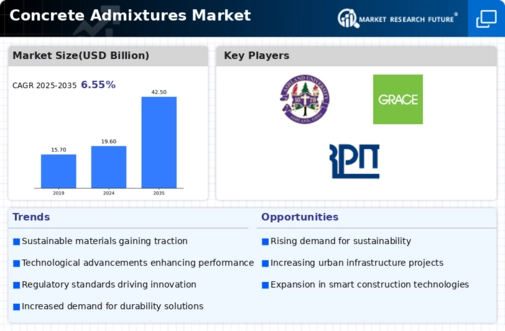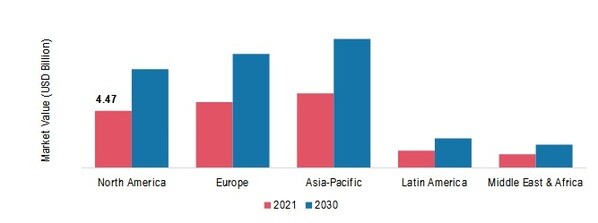Market Analysis
In-depth Analysis of Concrete Admixtures Market Industry Landscape
The Concrete Admixtures Market is a dynamic sector that plays a crucial role in the construction industry, offering a variety of additives designed to enhance the performance of concrete. These admixtures are essential for improving the workability, durability, and strength of concrete, leading to increased efficiency and cost-effectiveness in construction projects. One of the main drivers behind this is the global construction industry, which is growing at a rapid pace. As urbanization continues to accelerate, there is a rising demand for infrastructure development, residential buildings, and commercial spaces. This surge in construction activities directly translates into an increased need for high-performance concrete, driving the demand for admixtures. Additionally, manufacturers are developing new types of admixtures that meet the changing needs of contemporary construction projects as technology advances. Nowadays, infrastructure development has become an essential objective for many developing countries, hence contributing significantly to increasing global market share for concrete admixtures. Admixtures have indeed become necessary for both commercial and residential buildings. Almost 75 percent of commercial buildings select admixtures for concrete to avoid leveraging maintenance costs. Government policies for enhanced infrastructure standards are also responsible for the growing demand for concrete admixtures. The ability of admixtures to handle rigorous environmental conditions is raising the global demand for concrete admixtures to optimum levels. Environmental considerations have become an important force behind the dynamics of the market. Sustainability in construction has gathered momentum, with more emphasis being placed on eco-friendly procedures; hence, there is a growing need for concrete admixtures that will help minimize their environmental effects. Regulatory factors also shape the concrete admixtures industry. Construction material standards and specifications, such as those relating to chemicals used to make concrete, are increasingly becoming stricter globally at the behest of governments and their regulatory bodies. The competitive landscape within the concrete admixtures sector also affects market dynamics to a great extent. Several major players try to gain competitive advantage through product innovation, strategic alliances, mergers, and acquisitions, among other strategies in this industry. Additionally, economic conditions and price fluctuations for raw materials contribute to overall volatility in the concrete admixtures market. The cost of key input materials like polymers, chemicals, and mineral additives drives manufacturing costs.


 Source: Secondary Research, Primary Research, Market Research Future Database and Analyst Review
Source: Secondary Research, Primary Research, Market Research Future Database and Analyst Review



Leave a Comment